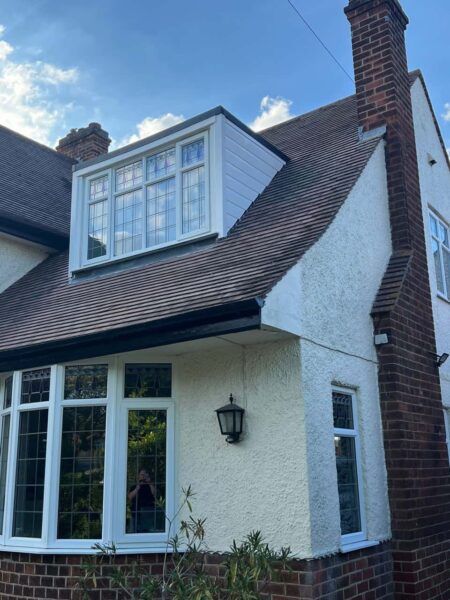Felt Roofing Do’s and Don’ts: What Keeps It Leak-Free Long-Term
Felt roofing remains a trusted solution for many flat roof applications — from extensions and garages to garden buildings and commercial properties. When installed and maintained correctly, felt roofing can provide long-lasting, leak-free performance. However, when poorly handled, it can quickly lead to water ingress, surface damage, and costly repairs. At EA Roofing Daventry, we help homeowners and businesses across Daventry, Northamptonshire get the most from their felt roofs through expert installation and routine care.
This article outlines the essential do’s and don’ts of felt roofing — covering what contributes to long-term durability and what to avoid if you want to keep your roof watertight.
Why Felt Roofing Remains Popular
Modern felt roofing systems are far more robust than older bitumen-based solutions. Reinforced membranes, torch-on technology, and improved installation methods mean today’s felt roofs can easily last 15–25 years with proper care.
Benefits of modern felt roofing:
- Affordable and cost-effective
- Quick to install and repair
- Suitable for most flat or low-pitch roofs
- UV and weather-resistant with the correct finish
- Can be layered and repaired without full replacement
Despite its advantages, felt roofing needs to be treated with the right approach to prevent avoidable issues.
The Do’s of Felt Roofing
1. Do Ensure Proper Installation
The longevity of any felt roof starts with how well it’s installed. Overlaps, bonding, and edge detailing must be precise to prevent leaks.
- Always use a qualified and experienced installer
- Torch-on systems should be applied using professional tools
- Ensure drip edges and corners are sealed properly
- Allow correct ventilation under the deck to avoid condensation
At EA Roofing Daventry, we apply felt roofing in accordance with current best practices, ensuring your system performs reliably over the long term.
2. Do Carry Out Regular Inspections
Felt roofing should be inspected at least once or twice a year — particularly after periods of heavy rainfall, snow, or strong winds.
- Check for bubbles, blisters, or lifting seams
- Look for signs of standing water or soft spots
- Clear debris from outlets, gutters, and flat surfaces
- Examine flashing details where the roof meets walls or chimneys
Catch small problems early, and you can prevent larger issues down the line.
3. Do Clean the Surface
Although felt is durable, it can still be affected by organic build-up like moss, algae, or wet leaves. These can trap moisture and accelerate surface wear.
- Use a soft brush or low-pressure rinse to clean the surface
- Avoid harsh chemicals that could damage the protective mineral layer
- Trim nearby trees to reduce leaf drop and shading
Clean surfaces dry faster and reduce the risk of leaks or rot in adjacent materials.
4. Do Address Ponding Water Promptly
Ponding water — when water sits for more than 48 hours after rain — is a common issue with flat roofs. Over time, it can weaken seams and lead to leaks.
- Ensure drainage outlets are clear and functional
- Investigate low spots or sagging substrate beneath the felt
- Install additional falls or drainage points if needed
EA Roofing Daventry can assess and improve drainage for flat felt roofs throughout Daventry and surrounding areas.
The Don’ts of Felt Roofing
1. Don’t Attempt DIY Repairs with Tar or Sealant
Quick-fix products often seem like an easy solution, but they rarely provide lasting results on felt. They can trap moisture beneath or fail under UV exposure.
- Avoid applying roof paint or sealant over cracked felt
- Don’t patch holes with adhesive or mastic without professional advice
- DIY solutions may void warranties or worsen underlying problems
Always consult a roofing specialist for proper repair methods.
2. Don’t Walk on the Roof Unnecessarily
Felt can be damaged by foot traffic — especially in warm weather when it’s more pliable, or during frost when it becomes brittle.
- Use boards if access is essential
- Avoid tools or materials that can puncture or scuff the surface
- Keep pets, garden furniture, or ladders off the roof
Even minor surface damage can allow moisture to penetrate over time.
3. Don’t Ignore Early Warning Signs
Small issues with felt roofs tend to develop into bigger problems if left unresolved. Don’t wait until a ceiling is stained or dripping before acting.
Common warning signs:
- Bubbling or lifting at joints
- Discoloured areas or mould patches
- Soft spots or depressions when pressed
- Damp smells inside the property
If you notice any of these, get the roof checked by a professional as soon as possible.
4. Don’t Delay Re-Felting When It’s Due
Felt roofing has a natural lifespan, and waiting too long to replace it can cause internal damage to your property’s structure or insulation.
- Older felt may crack, shrink or lose its protective finish
- A full replacement offers a chance to improve insulation and drainage
- Modern materials often come with longer guarantees and better performance
We offer full felt roof replacements across Daventry, Northamptonshire for homes, garages, porches, and commercial spaces.
Why Choose EA Roofing Daventry?
As a trusted roofing contractor serving Daventry and the surrounding areas, EA Roofing Daventry specialises in felt roofing solutions tailored to flat roofs of all types. We’re experienced in everything from minor repairs to full replacements, and we pride ourselves on clear advice, competitive pricing, and professional workmanship.
With EA Roofing Daventry, you benefit from:
- Fully qualified and insured roofers
- High-performance felt systems and torch-on methods
- Prompt service and detailed roof assessments
- Local knowledge and long-term guarantees
We understand the unique challenges of flat roofing and work to deliver reliable, long-lasting results for all our clients.
Conclusion
Felt roofing can be a dependable, leak-free solution — provided it’s installed correctly and maintained with care. By following the right do’s and avoiding common don’ts, property owners can extend the lifespan of their flat roof and prevent the need for costly repairs. Whether you need a fresh installation, a routine check, or targeted repairs, investing in the health of your felt roof pays off in the long run.
If you’re in Daventry, Northamptonshire and need expert felt roofing support, contact EA Roofing Daventry today. We’re here to help you keep your flat roof leak-free, secure, and built to last.
Call us on: 01327 223 899
Click here to find out more about EA Roofing Daventry
Click here to complete our contact form and see how we can help with your roofing needs.

